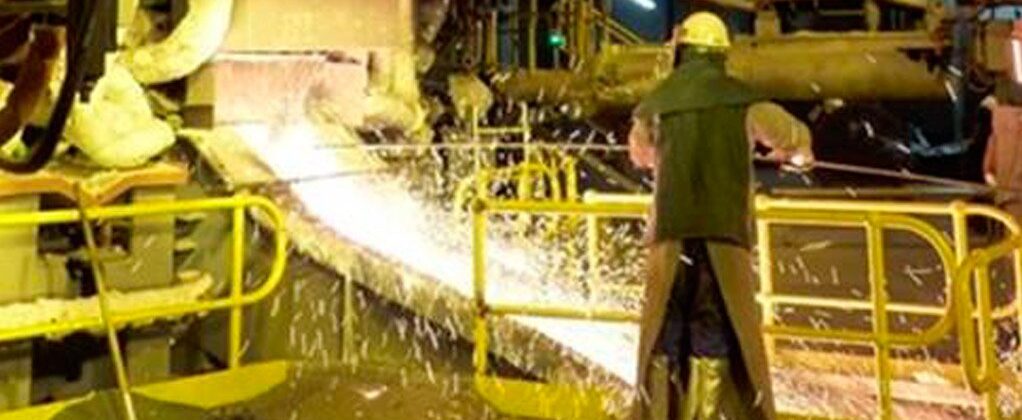by Flextra Engineered Products 0 comment
Next year holds much of the same headwinds for metals, engineering sector
Leading up to the publication of the Steel and Engineering Industries Federation of Southern Africa’s (Seifsa’s) ‘State of the Metals Sector Report 2023’ in February, COO Tafadzwa Chibanguza tells Engineering News inflation is one of the most intense headwinds facing the global economy and likens it to the next economic pandemic facing the world.
“The global monetary policy response to cure this inflation risk is what is triggering multiple economic adverse economic developments, with fiscally vulnerable emerging markets particularly at risk.”
He confirms that much of what Seifsa expected would make 2022 a difficult year for the metals and engineering (M&E) sector has turned out to be even worse, with inflation being the biggest global dampener of demand and loadshedding being the biggest local inhibitor of production.
Chibanguza believes that, locally, the M&E sector needs more public infrastructure spending and for preference to be given to local suppliers for projects – where competitive capacity does indeed exist.
Although production from the total M&E sector in South Africa has recorded a growth rate of 1.4% in the year-to-date, Chibanguza explains that it is mostly owing to the high 3.3% growth rate experienced in the first quarter of 2022, on the back of lower interest rates and a general economic uptick following the lifting of Covid-19 lockdowns and ahead of the start of the conflict in Ukraine.
He adds that persistent power outages locally have eroded much of the sector’s post-Covid-19 gains and will continue to impact on the sector’s productivity in 2023.
Chibanguza tells Engineering News that inflation affects manufacturers deeply, since aggressive cost increases cannot always be fully passed on to customers leading to margin erosion.
Additionally, the monetary policies governments put in place to curb inflation tends to hurt sectors to which the M&E sector supplies, since increasing cost of capital is inversely related to investment.
Chibanguza adds that, while inflation was high at the start of the year owing to post Covid demand increasing much faster than supply chains could respond to, it only got worse when Russia invaded Ukraine, and set the proverbial cat among the pigeons, as inflation spiked, especially in the food and energy sectors, and later became more widespread.
As a result, input costs such as electricity and fuel have become significantly more expensive for manufacturers and suppliers in the M&E sector, coupled with prevailing supply chain issues.
Further, Chibanguza explains that inflation not only erodes purchasing power, but also competitiveness, in instances where the inflation rate of peer countries may be lower.
He adds that global reserve banks almost have to “induce” a recession, or induce a slowing down of activity, to contain inflation, which deeply impacts on demand and investment in the M&E sector, as well as the sectors that are supplied by the M&E sector, such as mining, construction and automotive.
When volumes are low, the State needs to help support continued demand and provide companies with the necessary economies of scale to stay profitable, Chibanguza argues.
Going into 2023, he expects much of the global and local headwinds to the M&E sector to remain, including inflation, which, despite beliefs that inflation in the US has reached its peak, still sits above the targeted 2%.
The US Federal Reserve, the benchmark of global capital, will maintain a hawkish and a contractionary monetary policy stance, with contagion across the globe.
He adds that with China having shut down its economy again in 2022 owing to its strict management of Covid-19, it has significant implications for raw materials demand globally and softens global economic activity.
Chibanguza expects the conflict in Ukraine to continue impacting on energy supply in Europe, a key trading partner for South Africa, and on global supply chain disruptions. This while South Africa is poised to continue experiencing intense loadshedding for at least the next 12 to 18 months.
Another constant headwind for the M&E sector remains local government and its failure to ensure efficient service delivery. “These inefficiencies in particularly energy and water supply breed costs for suppliers,” Chibanguza highlights.
He believes the ultimate solution lies in establishing more public-private partnerships and for municipalities to allow the private sector to be the implementer in resolving these challenges given its requisite skills and financial resources.
This solution presents a natural virtuous cycle, given that it is in the best interest for these private sector companies to be part of the solution to curb the costs associated with the current inefficiencies.
Chibanguza stresses that a national strategy on industrialisation is urgently needed to stabilise and reignite the M&E sector, which must include an aggressive infrastructure programme and a dedicated focus on economic reform, rolled out in partnership with the private sector.

